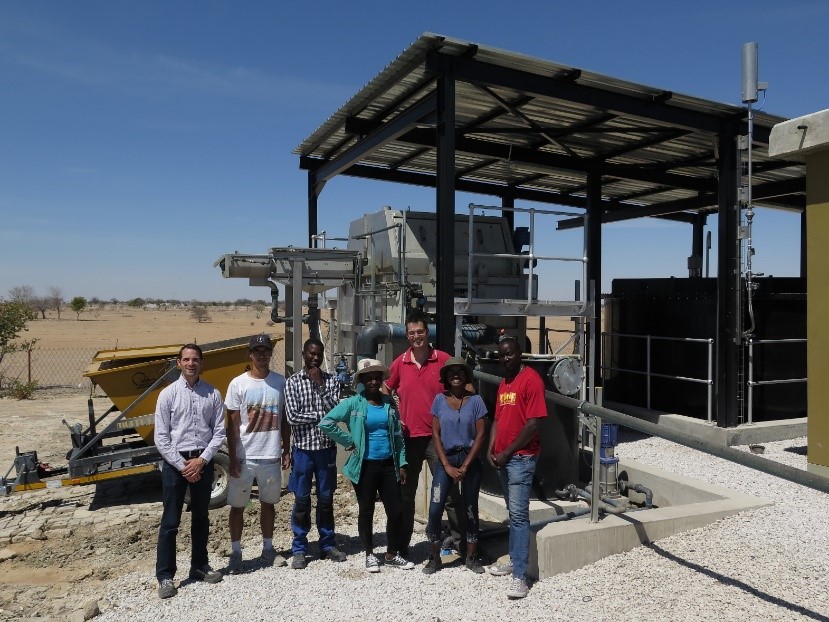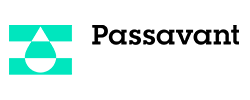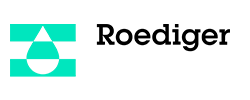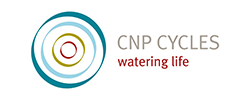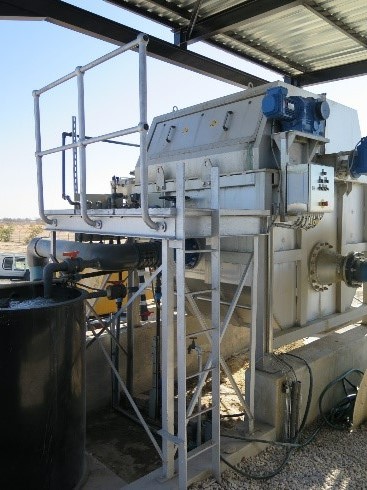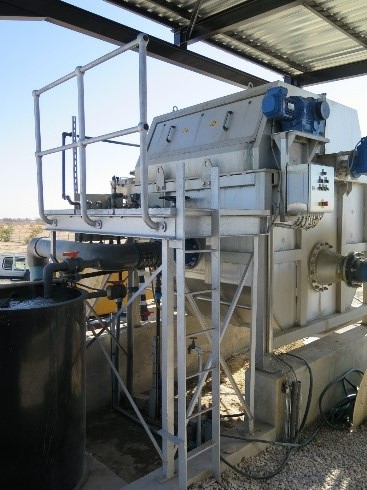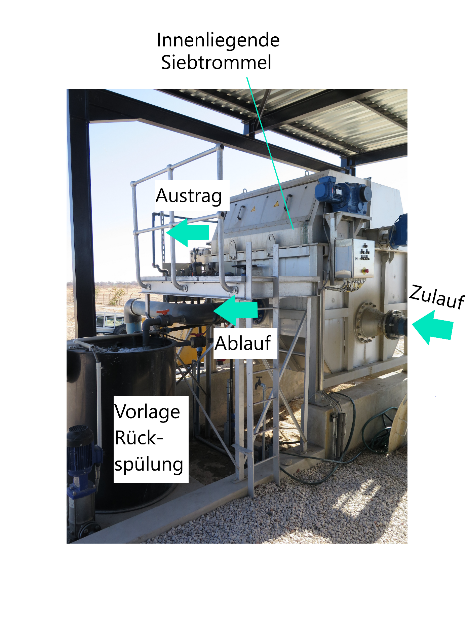Application of the Passavant® CarbonExtract® process: Use of a microscreen for mechanical pre-treatment of wastewater to relieve a wastewater pond and for primary sludge recovery.
At conventional wastewater treatment plants, sedimentation tanks are often provided downstream of mechanical treatment to remove particulate matter from the wastewater. In these primary clarifiers, particulate matter is to sediment, which, however, requires large volumes (for flow diagram, see Media Library). Subsequently, the sedimented sludge is collected by means of scraper technology and removed by pumps. In a further process step, excess water is separated.
As an innovative alternative to classic primary clarifiers with subsequent separation of water, the Aqseptence Group has developed the Passavant CarbonExtract® process (see media library for flow diagram). For this purpose, a Noggerath® trommel screen RSH-MG is used, which can be designed with different mesh sizes, e.g. 250 µm or 750 µm. Removable screen baskets allow the mesh size to be adjusted or a defective screen to be replaced in a very short time. The flow through the drum screen is from the inside to the outside. This creates a filter layer that retains particles smaller than the actual mesh size. As soon as the flow rate decreases too much due to a filter layer that has become too strong, the water level in the drum rises. A cleaning process is started in which the screen drum is set in motion and cleaned from the outside to the inside with air-water mixture. The organic-rich screenings are collected, pre-dewatered or pressed if required. Depending on the requirements, a thickened or compact screenings remains (primary sludge).
Due to the advantages compared to conventional primary clarification, the innovative Noggerath® Drum Screen RSH MG was selected in the EPoNa project. The drum screen is fed by a pump with barely pretreated raw sewage (only use of a coarse screen) and nevertheless reliably separates particulate matter. This allows the downstream pond system to be unloaded, improving biological treatment while allowing pond desludging to take place at longer intervals because there are fewer particles in the wastewater.
The dewatered sludge can be used directly as fertilizer/soil improvement or first digested (digester production) and the remaining residues used for fertilization/soil improvement.

